Health Issues Caused by Obesity
Understanding Obesity
Big Portions, Big Problems
Discrimination & Prejudice
Emotions & Eating
Exercise for Fitness & Weight Loss
Fast Food & the Obesity Epidemic
Health Issues Caused by Obesity
Looking & Feeling Good in Your Body
Nature & Nurture: The Causes of Obesity
No Quick Fix: Fad Diets & Weight-Loss Miracles
Surgery & Medicine for Weight Loss
Health Issues Caused by Obesity
Jean Ford
Mason Crest
Mason Crest
450 Parkway Drive, Suite D
Broomall, PA 19008
www.masoncrest.com
Copyright 2015 by Mason Crest, an imprint of National Highlights, Inc. All rights reserved. No part of this publication may be reproduced or transmitted in any form or by any means, electronic or mechanical, including photocopying, recording, taping, or any information storage and retrieval system, without permission from the publisher.
Printed in the United States of America.
Series ISBN: 978-1-4222-3056-5
ISBN: 978-1-4222-3062-6
ebook ISBN: 978-1-4222-8845-0
Cataloging-in-Publication Data on file with the Library of Congress.
Contents


We as a society often reserve our harshest criticism for those conditions we understand the least. Such is the case with obesity. Obesity is a chronic and often-fatal disease that accounts for 300,000 deaths each year. It is second only to smoking as a cause of premature death in the United States. People suffering from obesity need understanding, support, and medical assistance. Yet what they often receive is scorn.
Today, children are the fastest growing segment of the obese population in the United States. This constitutes a public health crisis of enormous proportions. Living with childhood obesity affects self-esteem, employment, and attainment of higher education. But childhood obesity is much more than a social stigma. It has serious health consequences.
Childhood obesity increases the risk for poor health in adulthood and premature death. Depression, diabetes, asthma, gallstones, orthopedic diseases, and other obesity-related conditions are all on the rise in children. Over the last 20 years, more children are being diagnosed with type 2 diabetesa leading cause of preventable blindness, kidney failure, heart disease, stroke, and amputations. Obesity is undoubtedly the most pressing nutritional disorder among young people today.
This series is an excellent first step toward understanding the obesity crisis and profiling approaches for remedying it. If we are to reverse obesitys current trend, there must be family, community, and national objectives promoting healthy eating and exercise. As a nation, we must demand broad-based public-health initiatives to limit TV watching, curtail junk food advertising toward children, and promote physical activity. More than rhetoric, these need to be our rallying cry. Anything short of this will eventually fail, and within our lifetime obesity will become the leading cause of death in the United States if not in the world.
Victor F. Garcia, M.D.
Founder, Bariatric Surgery Center
Cincinnati Childrens Hospital Medical Center
Professor of Pediatrics and Surgery
School of Medicine
University of Cincinnati

Words to Understand

accessible: The ability to be reached or attained.
diagnostic: Used in identifying the cause of a disorder.
anatomical: Relating to the physical structure of animals.
Weighing In:
Defining the
Problem
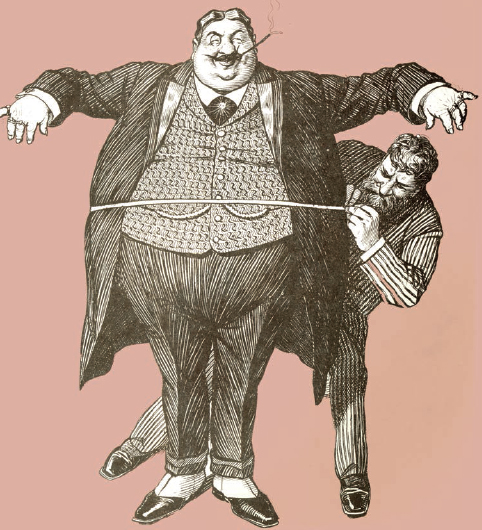
Was there really a time when people wanted to be chubby? Remarkably, yes! At the turn of the nineteenth century, when the leading causes of death were tuberculosis, pneumonia, and diarrheal diseases, most people desired fuller figures. Plumpness was in. Society equated a bulbous belly with robust health, not to mention wealth.
Why? One reason is that many health professionals believed a little extra fat helped people withstand the ravages of disease. The medical community even recommended weight gain for those cursed with skinny frames (today we would call those people blessed) and provided instructions for cultivating extra fat. Consider these words by two turn-of-the-century physicians:
Persons who desire to become plump and remain so should retire about 9 or 10 P.M., and sleep until 6 or 7 A.M.... The breakfast should be plain and substantial.... A course of fresh ripe fruit should first be eaten, then potatoes, meat or fried mush, or oatmeal porridge, bread and butter. The drink may be cocoa or milk-and-water, sweetened.... The hearty meal of the day should not come later than five hours after breakfast. About 3 or 4 P.M. a drink of water should be taken. Supper should be light; bread-and-butter and tea, with some mild sauce.... Another method of becoming plump is a free diet of oysters.... To sum up, then: to become plump, one must use plenty of water, starchy foods, oysters, fats, vegetables, sweets, and take plenty of rest. By following the instructions, lean or spare persons will become fleshy or plump. (Drs. George P. Wood and E. H. Ruddock, Vitalogy or Encyclopedia of Health and Home, 1901).
Today, these doctors words are fascinating, even humorous, but our weight problem is not. Overweight and obesity have reached epidemic proportions in the United States. Working in a world rife with poverty and disease, these doctors never could have foreseen that someday it would be not only too easy for most Americans to gain weight, but almost impossible for many of them to lose weight. That obesity-related ailments would replace all infectious diseases as killers of Americans would have seemed impossible. These doctors surely could not have guessed the dire effects Americas fattening would have on individuals and on society at large. If only they knew of the impending health crisis.
 The Epidemic
The Epidemic
Weight-related issues and obesity are a serious and growing health problem in America. According to an article in the Washington Post, the average American adult put on eight pounds between 1980 and 1991. That trend continued through the nineties. In 1990, about fifty-six percent of adult Americans were overweight, and twenty-three percent were obese, cites the American College of Physicians Annals of Internal Medicine. Today, that number is still growing. According to the Centers for Disease Control and Prevention (CDC), as of 2010 69.2 percent of Americans are overweight and 35.9 percent are obese. Fifty-six percent up to 70 percent and 23 percent up to 36 percent in just 20 years?
The National Institutes of Health (NIH) and the National Institute of Diabetes and Digestive and Kidney Diseases (NIDDK) substantiate these figures. According to the 19992000 National Health and Nutrition Examination Survey (NHANES), over two-thirds of U.S. adults are overweight, and over one-third are obese.
So overweight and obesity are clearly concerns for our nations adults, but what about young people? The statistics are similarly alarming. In youth between the ages of six and nineteen, about one-third are overweight, and more than one in six are considered to be obese. Thirty-three percent of boys and 30.4 percent of girls are considered to be overweight, and 18.6 percent of boys and 15 percent of girls are classified as obese.
Next page
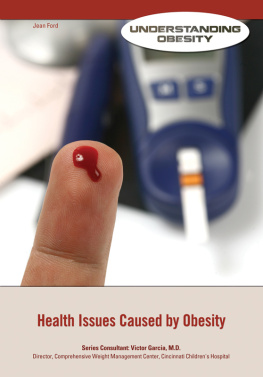
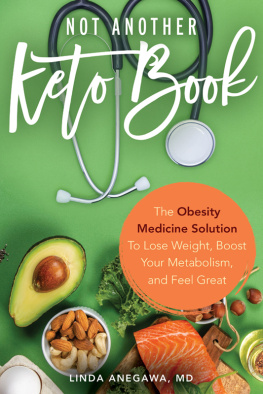
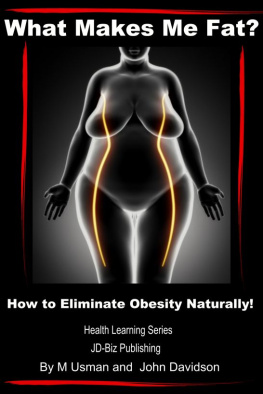

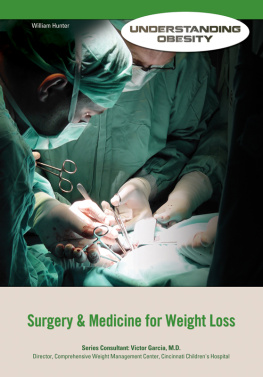
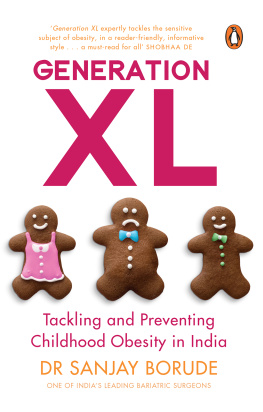


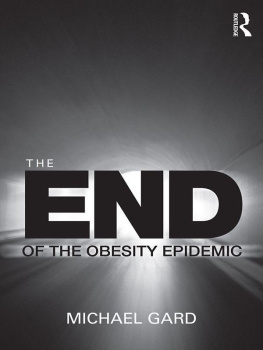

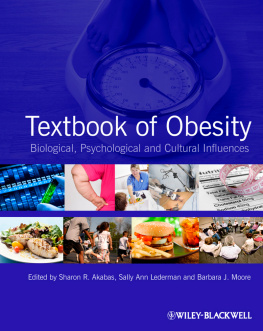





 The Epidemic
The Epidemic